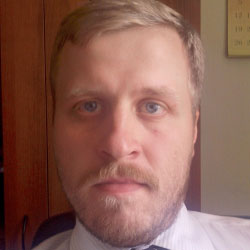The InfoTEK magazine published an author's column by Alexey Belogoryev, Deputy Principal Director on Energy Studies of the Institute for Energy and Finance, on the topic "The gas industry in the crucible of (non) market passions."
The price games
The introduction of a "price ceiling" on futures traded on TTFs and other hubs is a very ambiguous signal to the market. On the one hand, the EU countries actually officially recognized prices within $2,000 per 1,000 cubic meters as a new temporary "normality", although earlier any jumps in prices above $500-600 seemed abnormally high, especially in the summer. On the other hand, this decision provokes a potential gap in the price dynamics of spot (which are not subject to restrictions) and futures prices, as well as the transfer of part of the capital from TTF to NBP and, possibly, other European hubs, if the European Commission makes an exception for them (it negotiated such a right). This undermines the established pricing mechanisms in the EU market and reduces the representativeness of stock indices. More broadly, it casts doubt on stock indices as the most advanced pricing mechanisms, which the EU has been the apologist for two decades. At the same time, it is unlikely that it will be possible to achieve the main goal - to keep price growth within $2,000: in the spot market in 2023, they can rise much higher, as well as in OTC contracts. Their dynamics does not depend at all on the "ceiling", but on the actual balance of supply and demand.
The LNG market
An increase in LNG supply within three to four years will be able to eliminate the current imbalance. Moreover, there is a significant risk of overinvestment in new liquefaction capacity, which could lead the market to a significant surplus starting as early as 2026. However, the long-term demand response to the 2022 crisis is far more worrisome. If we ignore Europe, then the main growth in consumption of both LNG and gas in general occurs in the world at the expense of countries either with a relatively low income level (for example, Pakistan and Bangladesh) or with controlled demand, that is, the ability and desire of the state to limit or increase its growth depending on the dynamics of domestic production, the overall balance of the fuel and energy balance, the implementation of low-carbon targets, etc. Often these are the same countries. The price shock of 2022 could have an effect on them comparable to the impact of the oil shocks of the 1970s on developed countries. In other words, to drastically reduce the economic attractiveness of gas and force a reconsideration of its role in the "energy transition." This creates risks for all gas producers, including Russia, both in relation to Power of Siberia 2 and new LNG projects, which, apart from the first stage of Arctic LNG 2, will most likely be able to enter the market only under conditions of overload.

Subscribe for updates
and be the first to know about new publications